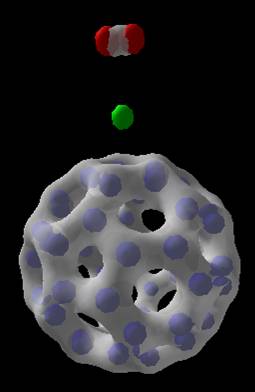Research
Puru Jena’s current research interests include three main topics: Atomic clusters Hydrogen storage, and Spintronics.

Atomic Clusters: Atomic clusters consisting of a few to a few thousand atoms constitute an intermediate state of matter between atoms, molecules and solids. Since the size and composition of clusters can be controlled one atom at a time, their study provides an unprecedented opportunity to understand how properties of bulk matter evolve. These studies include determination of cluster geometry, its electronic structure, and optical, magnetic, catalytic, and vibrational properties. The geometry of clusters are calculated from first principles using both density functional theory and quantum chemical methods and most up to date computer codes such as Gaussian, DMol, ADF, and VASP. The effect of temperature on cluster stability and properties are studied using quantum mechanical based molecular dynamics method. The effect of charge on cluster geometries, stability of clusters as a function of charge, size, and composition, and design of clusters or superatoms that mimic the properties of atoms are among the problems of current interest. These superatoms can be used to construct a three dimensional Periodic Table and can form the basis for the synthesis of cluster assembled materials where clusters instead of atoms form the building blocks. Synthesis of clusters with tailored magnetic and optical properties for applications in biomedicine, catalytic materials for applications in hydrogen storage, superhalogen and superoxide cluster for applications as high energy density materials are some of the high impact areas being pursued. A strong collaboration with several international experimental groups is helping to validate the theoretical predictions.

Hydrogen Storage: The rising population and standard of living around the world has put considerable pressure on existing energy sources. Nearly 80% of the current demand on energy is met by fossil fuels whose supply is not only limited but they have adverse effect on the environment. Thus, a clean energy solution has to be found to meet the world’s growing energy needs. A possible solution to the energy problem is to develop renewable energies that are clean, abundant, cost effective, and safe. One such promise is hydrogen, although hydrogen is not an energy source, but an energy carrier. It needs to be produced, stored, and used in fuel cell technology. While considerable challenges exist in all these areas, storing hydrogen with large gravimetric and volumetric density under ambient thermo dynamical conditions is essential. Research in Jena’s group is aimed at developing these materials. Using state-of-the-art theoretical calculations work is aimed at understanding fundamental mechanisms that govern the interaction of hydrogen with light materials. The work involves using catalysts to improve the hydrogen storage and release behavior of complex light metal hydrides such as alanates, imides, amides, and borohydrides. Also being studied are nanomaterials such as those based on carbon fullerenes, nanotubes, nanohorns, and BN and AlN nanomaterials. A novel form of storing hydrogen where an applied electric field can polarize the H 2 molecule similar to that developed in Jena’s group using metal ions is also under way. Collaboration with experimentalist in national laboratories provides a constant feedback on optimizing material characteristics.
Spintronics: Using electron spin as an extra degree of freedom in the synthesis of new electronic devices has great potential for not only learning exciting new science, but also to usher a new era of technological innovations. In this context the most important challenge is to understand the magnetic properties of dilute wide band gap semiconductors such as GaN and ZnO. The discovery that small amount of Mn impurities in GaAS can lead to ferromagnetism and that tailoring of impurity type and concentration as well semiconductor host can lead to room temperature dilute magnetic semiconductors (DMS) have created a new field called spintronics. A fundamental understanding of DMS materials involves determining the site the impurity atoms occupy, their distribution both within and on the surface, their preferred magnetic coupling, the effect of impurity concentration, and the morphology of the semiconductor host such as nanowires, nanotubles, and ultra thin films. Using density functional theory studies are being carried out to understand electronic structure and magnetic coupling of transition metal impurities in GaN and ZnO nanowires, nanotubes, and multi layers. The effect of intrinsic defects as well as vacancy induced magnetic coupling is also being studied. The theoretical work is strongly coupled with ongoing experiments around the world.